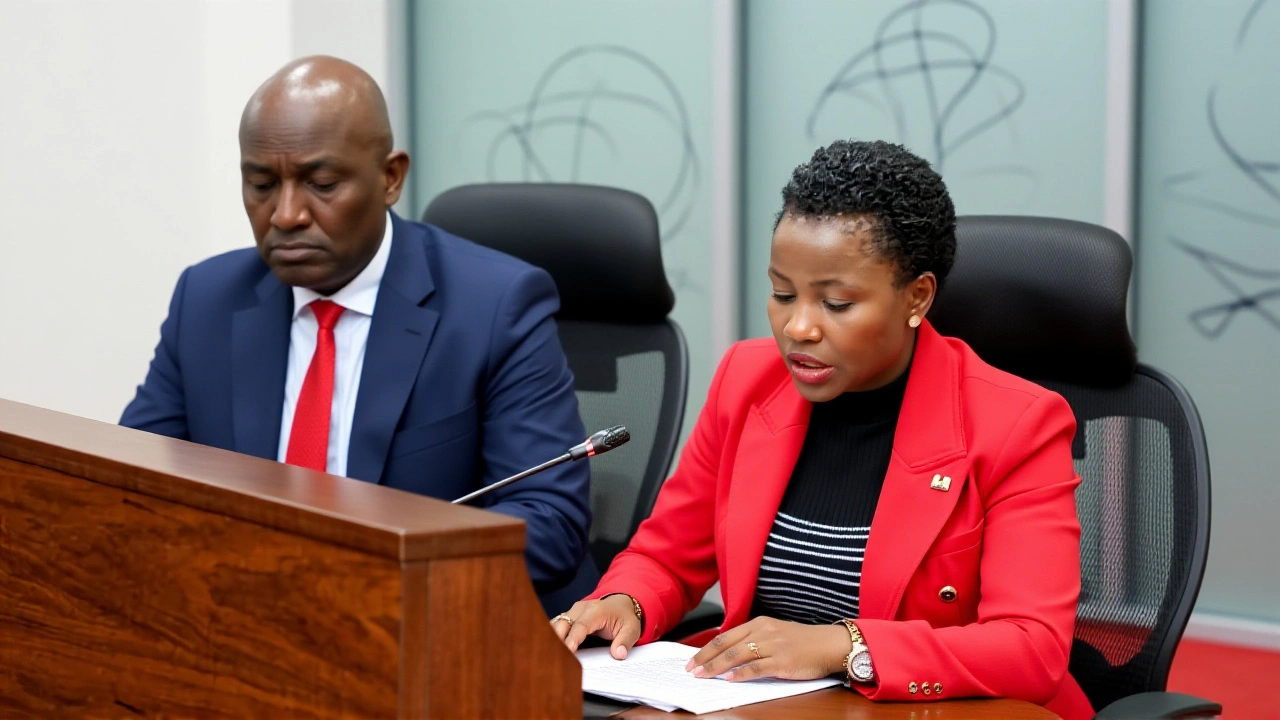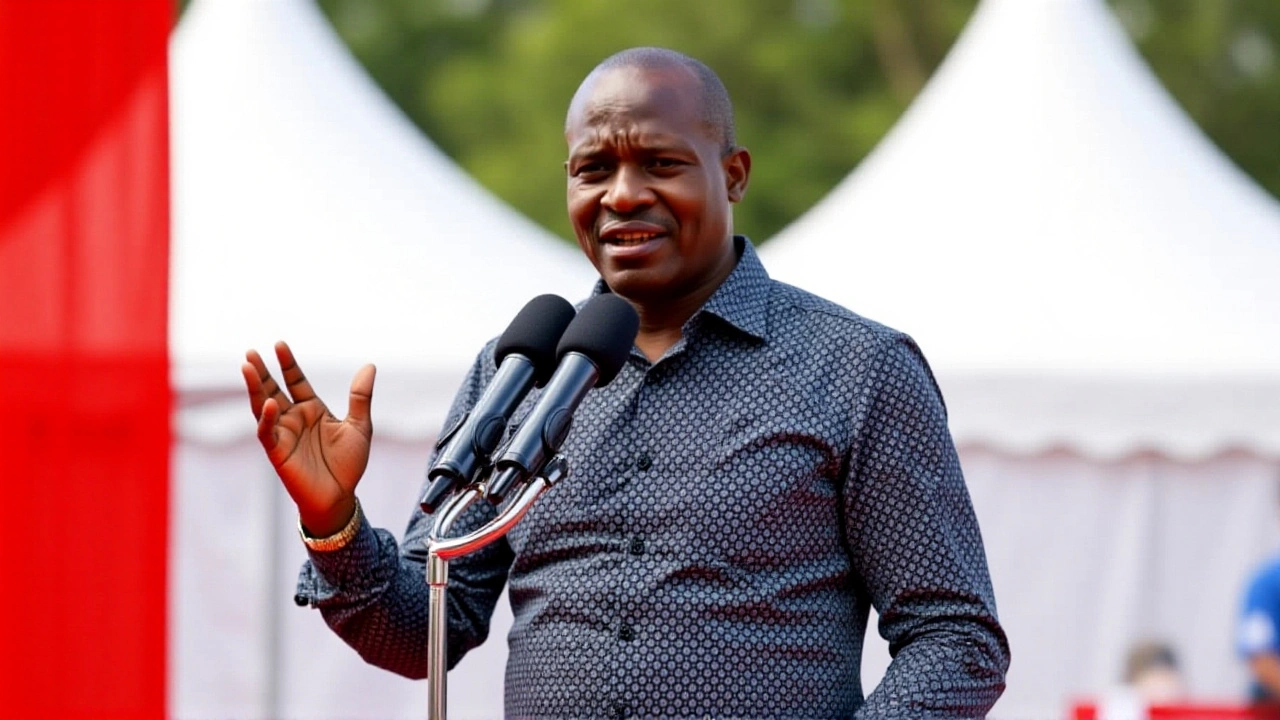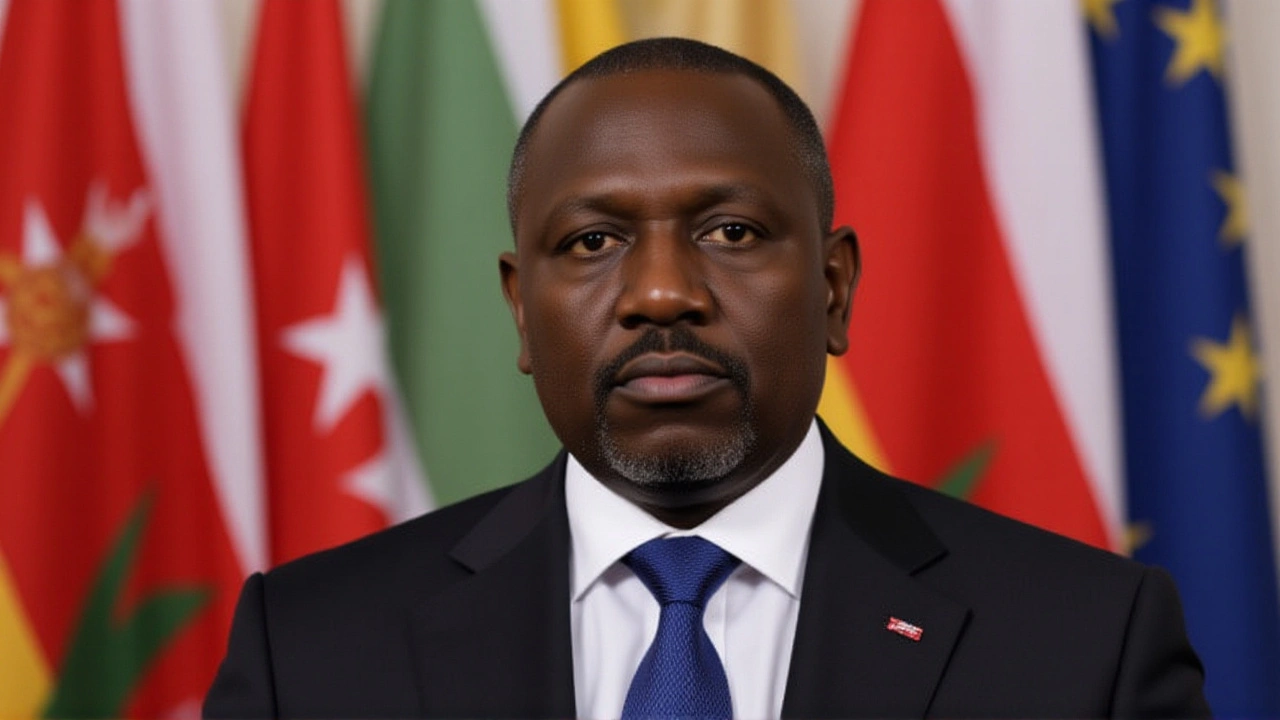When William Ruto, President of Kenya chaired a high‑level meeting at State House, Nairobi on 3 October 2025, he set in motion the nationwide rollout of the NYOTA programme – a KSh5 billion youth empowerment partnership with the World Bank. The initiative aims to reach 820,000 young Kenyans, with an initial tranche of 101,500 grant recipients each receiving KSh50,000 to kick‑start their businesses. Ruto stressed a “whole‑of‑government” approach, pulling in officials from the executive, legislature and county administrations to ensure transparency and inclusivity.
Program Overview and Funding
The National Youth Opportunities Towards Advancement (NYOTA) programme is structured around four intervention streams. The headline component disburses KSh50,000 grants to 100,000 youths – roughly 70 beneficiaries per each of Kenya’s 1,450 wards – creating a geographic safety net that mirrors the country’s electoral map. Beyond cash, the scheme earmarks training for 90,000 participants through on‑the‑job experience, 20,000 for prior‑learning recognition, and a massive 600,000‑person cohort slated for Access to Government Procurement Opportunities (AGPO) workshops.
Funding for NYOTA comes from a KSh5 billion allocation approved by the National Treasury, with the World Bank matching a portion through technical assistance and monitoring frameworks. According to a briefing by the Ministry of Cooperatives and Micro Small and Medium Enterprises Development, the multi‑year budget will be released in quarterly tranches to ensure fiscal discipline while keeping the rollout on schedule.
High‑Level Coordination Meeting
During the State House session, President Ruto was flanked by the cabinet’s Principal Secretaries, each tasked with shepherding the programme to their respective counties. He announced that the rollout would launch on 6 October 2025 at 9:00 AM, with every Principal Secretary returning to their home region to oversee local launch events.
"This is coming as a result of being deliberate about doing something about employment, empowerment and engagement with young people," Ruto said, his voice echoing through the press gallery. The president’s remarks were echoed by Prof Abdulrazak Shaukat, Principal Secretary for Research, who added, "By linking training to real market opportunities, we’re moving beyond short‑term handouts to sustainable livelihoods."
County Launches and Key Officials
The coordinated launch saw a flurry of activity across Kenya’s 47 counties. In Mombasa County, Mohamed Daghar, Principal Secretary for Transport opened the ceremony at Ronald Ngala Social Hall in Mvita, unveiling the first batch of grants for coastal entrepreneurs. In the neighbouring Kwale County, Abdulrazak Shaukat again took center stage at the Kwale Cultural Centre, emphasizing the programme’s focus on agribusiness.
Youth affairs were front‑and‑centre when Fikirini Jacobs, Principal Secretary for Youth inaugurated the St Thomas Hall launch in Kilifi, handing out the first set of KSh50,000 vouchers to aspiring tech start‑ups. Further south, Idris Dakota, Principal Secretary for Cabinet Affairs presided over the Hola Primary School ceremony in Tana River, highlighting how NYOTA will dovetail with ongoing agricultural extension programmes.
Other notable launches included Abubakar Hassan, Principal Secretary for Trade and Investments at the Lamu County Commander Centre, Shadrack Mwadime, Principal Secretary for Labour at CDH Mwatate Hall in Taita‑Taveta, Aden Abdi Milah, Principal Secretary for Maritime at Garissa University Amphitheatre, and Umi Mohamed Bashir, Principal Secretary for Culture at the ICT Hall in Wajir town.

Application Process and Phase Two
Simultaneous with the county ceremonies, the government reopened applications for NYOTA’s Phase Two. The registration window runs from 6 October to 12 October 2025 and is deliberately mobile‑first: applicants dial *254#, select ‘Apply for NYOTA Project’, and choose among three pathways – Business Support (grant‑linked training), On‑the‑Job Experience (internship), or Learning & Practice (recognition of prior learning).
“We wanted a system that young people could access even without internet data,” explained Japheth Otieno, a senior official at the Ministry of Youth Affairs. The USSD platform also offers real‑time feedback, confirming submission and providing a reference number for follow‑up.
Potential Impact and Expert Views
Economists warn that while cash grants can spark micro‑enterprise, the true test will be the programme’s ability to integrate beneficiaries into formal supply chains. Dr. Amina Hassan, senior fellow at the Kenya Institute for Public Policy Research and Analysis noted, “If the AGPO trainings translate into actual contracts with government ministries, we could see a measurable reduction in youth unemployment within two election cycles.”
Youth advocacy groups remain cautiously optimistic. The Kenya Youth Coalition released a statement saying, “NYOTA is a welcome step, but implementation must be swift and corruption‑free; otherwise, the promise of empowerment will evaporate.”
Opposition leader Raila Odinga called for parliamentary oversight, urging the Senate to set up a joint committee to monitor disbursements and training outcomes.

Next Steps and Outlook
As the first wave of launches settles, the Ministry plans a mid‑year audit in March 2026 to assess grant utilisation, training completion rates, and early business survival metrics. A public dashboard, powered by the World Bank’s data‑visualisation tools, will publish real‑time statistics for all 820,000 participants.
Should NYOTA meet its targets, Kenya could set a regional benchmark for large‑scale youth empowerment, potentially inspiring similar schemes in Tanzania, Uganda and Ethiopia. For now, millions of Kenyan youths are watching their phones, waiting for the USSD prompt that could change their economic trajectory.
Frequently Asked Questions
How does NYOTA benefit unemployed youth in Kenya?
NYOTA provides KSh50,000 grants to 100,000 young entrepreneurs, plus training for another 720,000 youths through internships, prior‑learning recognition and procurement workshops. The cash helps start micro‑businesses, while the skills component aims to improve employability and link beneficiaries to government supply chains.
Who is responsible for overseeing the programme’s rollout?
The rollout is coordinated by the President’s office, the Ministry of Cooperatives and Micro Small and Medium Enterprises Development, and a network of Principal Secretaries assigned to each of Kenya’s 47 counties. Each Secretary leads the launch in their home county.
When can young people apply for Phase Two?
Applications open on 6 October 2025 and close on 12 October 2025. Interested candidates can register via the USSD code *254#, choosing one of three intervention pathways.
What safeguards are in place to ensure transparency?
The programme follows a whole‑of‑government approach, with real‑time tracking on a public dashboard, quarterly audits by the Auditor General, and parliamentary oversight committees mandated to review expenditures.
How does the World Bank support NYOTA?
Beyond co‑financing a portion of the KSh5 billion budget, the World Bank provides technical assistance, monitoring tools and data‑visualisation platforms to help the Kenyan government track impact and ensure best practices.


Lois Parker
NYOTA sounds nice, but let's see if the money actually lands.
Lerato Mamaila
It's encouraging to see a programme that tries to reach every ward, especially in coastal areas where youth unemployment is high. The inclusion of on‑the‑job training could bridge the skill gap.
Dennis Lohmann
Great step forward! The grant plus mentorship can really empower budding entrepreneurs 😊. I hope the follow‑up training is hands‑on and accessible.
Jensen Santillan
The NYOTA initiative represents an ambitious fiscal commitment that deserves rigorous scrutiny.
While KSh5 billion may appear substantial, its per‑beneficiary impact hinges on effective disbursement mechanisms.
The granularity of assigning roughly seventy grant recipients per ward suggests an attempt at equitable geographic coverage.
However, such uniform allocation risks overlooking densely populated urban centers where demand for capital is higher.
Moreover, the integration of World Bank technical assistance introduces a layer of external oversight that could enhance transparency, provided the monitoring tools are not merely symbolic.
The program's four‑pronged intervention model-cash grants, on‑the‑job experience, prior‑learning recognition, and AGPO workshops-aligns with contemporary labor market theories emphasizing skill acquisition alongside financial input.
Nonetheless, the efficacy of the AGPO workshops will be measured by the proportion of participants who secure actual procurement contracts, a metric historically elusive in similar schemes.
The USSD application platform is commendable for its low‑tech accessibility, yet its reliance on a single short‑code may strain network capacity during peak periods.
The timeline for Phase Two, spanning only a week, could inadvertently exclude youths in remote regions with limited mobile coverage.
A staggered rollout or extended window would mitigate such inequities and improve data fidelity.
Fiscal discipline through quarterly tranche releases is sensible, but the audit schedule-mid‑year in March 2026-may be too distant to correct early missteps.
Real‑time public dashboards are a step forward, yet their utility depends on user‑friendly visualization and regular updates.
From a macroeconomic perspective, if NYOTA successfully incubates micro‑enterprises, the ripple effects could contribute to formal sector growth and tax base expansion.
Conversely, should funding leakages occur, the program could exacerbate public distrust and fuel populist criticism.
Stakeholder engagement, particularly with youth advocacy groups, will be pivotal in maintaining momentum and accountability.
In sum, NYOTA's promise is compelling, but its realization will require vigilant oversight, adaptive implementation, and genuine partnership with the beneficiaries it seeks to empower.
Mike Laidman
The scheme is a notable policy instrument aimed at youth empowerment but its success will depend on execution and accountability
J T
Yo, if they actually hand out the cash this time, count me in 😎
A Lina
While the fiscal envelope appears robust, the program's KPI framework lacks granularity, risking superficial compliance without substantive value creation.
Virginia Balseiro
Whoa! This could be a game‑changer for Kenya's youth! Imagine thousands of startups blooming across every county-pure adrenaline for the economy! 🚀
Lane Herron
Oh great, another big‑ticket government programme-just what we needed, more paperwork and hope.
Henry Cohen
Honestly i think the whole thing is just a PR stunt they wont even track the money properly
Fabian Rademacher
Did you notice the World Bank is involved? That's the same group that pushed the debt traps in other nations. Something's off.
Terrell Mack
Appreciate the effort to make the process mobile‑first. Keeps things simple for folks without data plans. Keep it up!
Dawn Waller
What if, just for a moment, we consider that the true value of NYOTA lies not in the cash, but in the narrative it creates-a story of hope, ambition, and collective destiny; a tale we all, willingly or not, help to write.
Grace Melville
Key takeaway: applications run 6‑12 Oct via *254#; choose grant, internship, or learning pathway.
Ashlynn Barbery
I commend the Ministry for integrating comprehensive training modules alongside financial grants; this holistic approach should enhance long‑term sustainability of the ventures.
Sarah Graham
It's encouraging to see the rollout scheduled across all counties, though I hope the monitoring mechanisms will truly be transparent.
Jauregui Genoveva
Honestly, this feels like a fresh start for many young people 😍👍💪
Quinten Squires
NYOTA's phased implementation reflects a strategic pacing, allowing the government to adjust based on early feedback. The inclusion of prior‑learning recognition acknowledges informal skills that many youths already possess. If the procurement workshops translate into real contracts, the program could pivot from a cash handout to a catalyst for systemic change.
Tyler Manning
The initiative, while ostensibly benevolent, must be guarded against any subversive influences that could undermine national interests; vigilance is paramount.